Celebrate “Educational Candy Day” with a traditional Japanese game made of candy
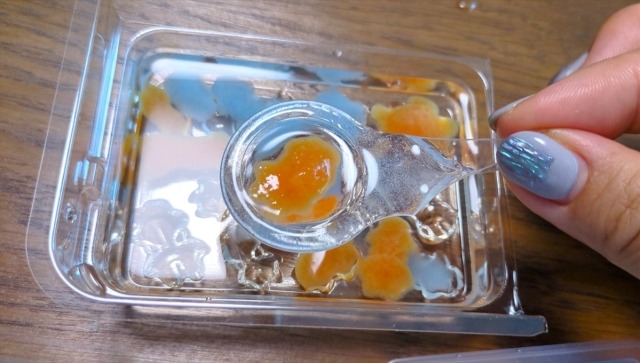
It’s okay to play with your food if it’s educational.
It’s Educational Candy Day once again in Japan! This is the day devoted to celebrating candy that feeds not only kids’ bellies but their brains as well, because the individual digits of 7/19 can be read as “chi i ku” which is also a word meaning “education.”
It was established by leading edu-candy maker Kracie, whose range of items all manage to turn packets of simple white powder into all kinds of sweet and savory snacks through the magic of science.
To celebrate, our writer Haruka Takagi bought a pack of Scoop Goldfish! (Sukutte Kingyo!) for 248 yen (US$1.78) at her local supermarket.
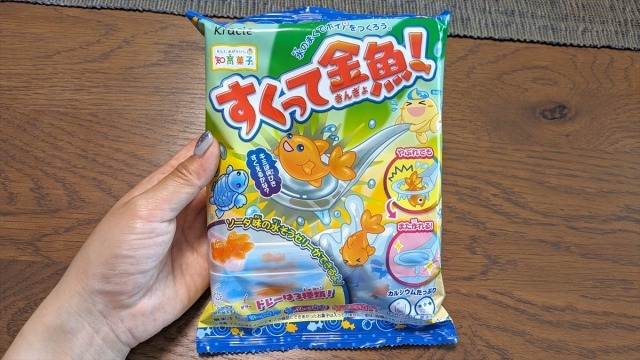
It’s a great choice for summer because it emulates a popular Japanese summer festival game goldfish scooping (kingyo sukui) in which kids try to pick up fish with little tissue paper rackets before they break.
▼ A video showing some goldfish scooping techniques
Since this is a Kracie product, everything is made of candy that starts off as a packet of powder. Here’s a look at the unwrapped kit which consists of plastic dishes and molds, a stir stick/paddle, blue fish powder, orange fish powder, tissue candy powder, tissue candy hardening powder, and water-like jelly powder.
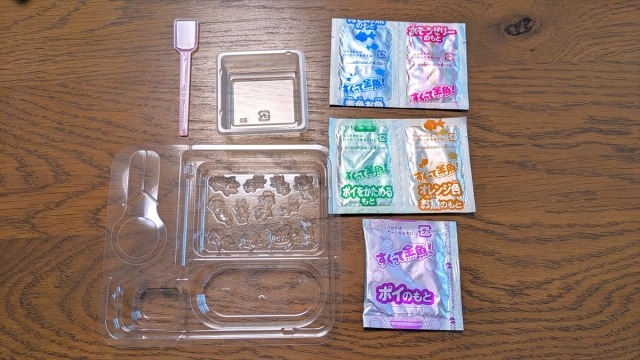
As we can see from the instructions on the back of the package, it’s quite involved, as edu-candy should be. There’s usually a QR code there as well so you can watch YouTube video instructions, sometimes in other languages, but we’re going to show you how this works right now.
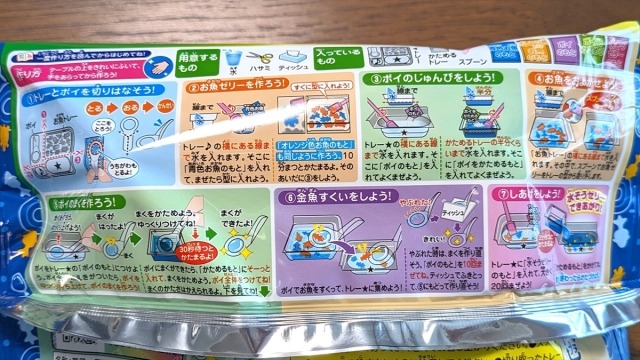
The first step is to cut apart all the plastic dishes and molds so they’re easier to work with. Each tray is carefully designed to hold a precise amount of water so Haruka was sure not to mix them up or use any substitutes.
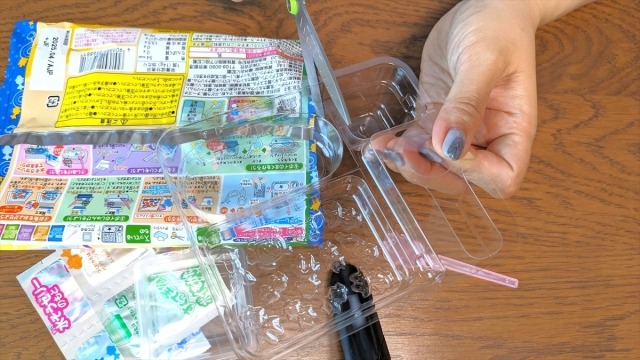
Next, she mixed the blue and orange fish powders with the correct amount of water in their designated plastic dishes.
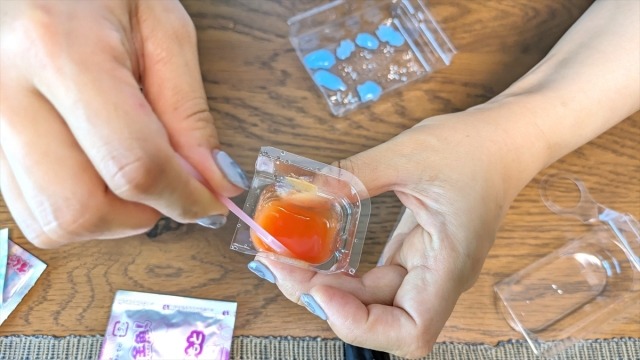
Once thoroughly mixed into a nice goo, she placed it into the aquatic animal molds of her choice. This really helps kids with critical thinking skills like, “Would a blue or orange turtle be more realistic?”
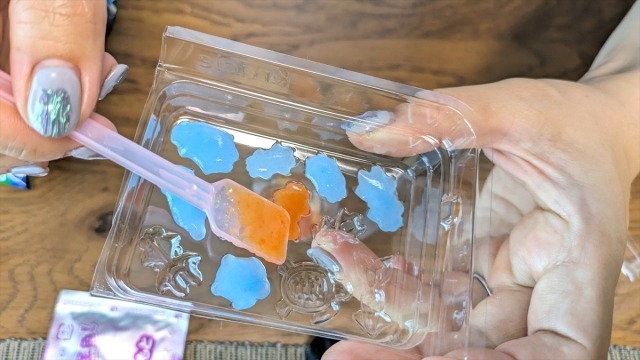
In real goldfish scooping, the plastic stick with tissue paper is called a “poi.” This is a rather difficult item to recreate in the medium of candy, but first Haruka mixed up the poi powder and poi hardening powder in their correct trays. This powder is a little harder to dissolve than the fish and takes a little more time and effort.


Fortunately, this gave her fish ample time to harden nicely.
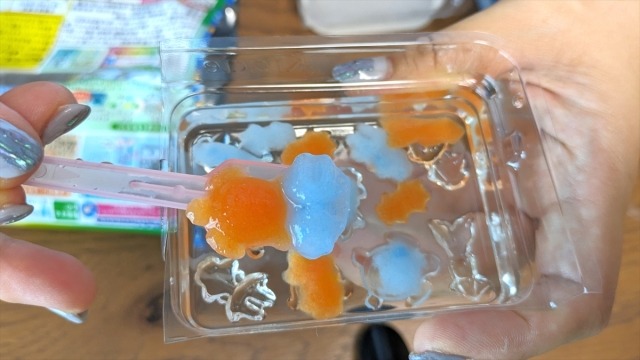
Back to the poi candy. First, she dipped the plastic frame into the basic poi powder mix so that it formed a film like a soap bubble across the opening of the loop.

Then, while keeping the film intact, she placed it into the poi-hardening solution and kept it there for about 30 seconds.
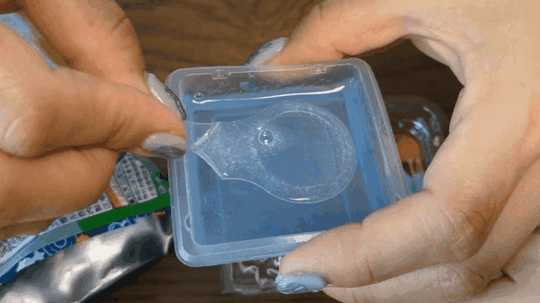
Actually, you can adjust the hardness of the film based on the amount of time in the hardening solution. Haruka’s fish-scooping days were long behind her, so she went for the full 30 seconds recommended for beginners, but those with more confidence can make their poi flimsier by soaking it for 20 or 15 seconds.
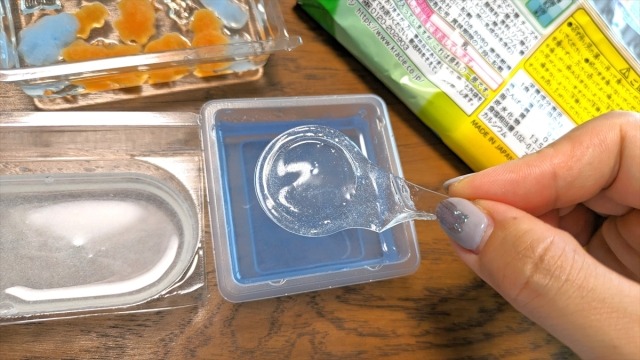
▼ The good news is that, unlike in the real game, if your poi breaks, you can just repeat the steps above to regenerate it.
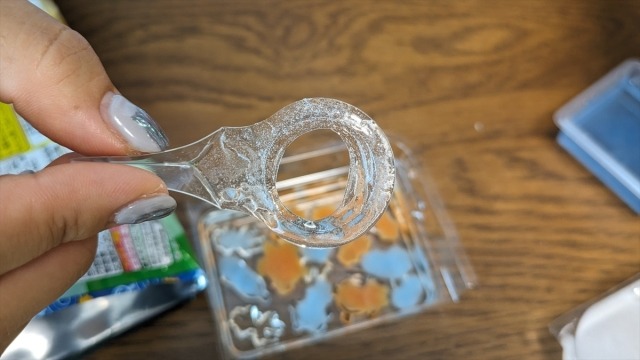
Goldfish-scooping time had arrived, so Haruka filled the tray of fish with water for them to float around in and put her poi to work.
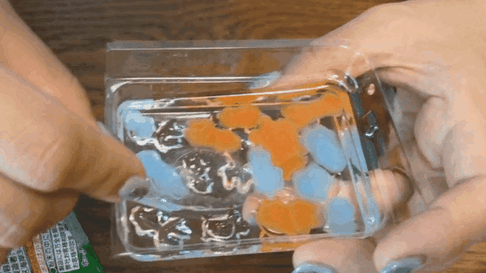
It was surprisingly tricky because the jelly-like fish and jelly-like scoop were both very slick so it was hard to get a grip on anything. However, since she soaked her poi for a long time, it was very strong and didn’t even break if she jiggled a fish around in it.
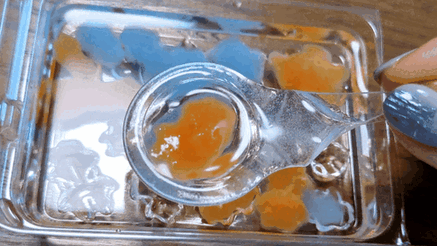
According to the rules of Scoop Goldfish!, after catching one, you must gently drain out the excess water and then place the creature into the tray with the regular poi solution.

Once all fish had been scooped and captured, Haruka poured the water-like jelly powder into the tray of fish and poi solution.
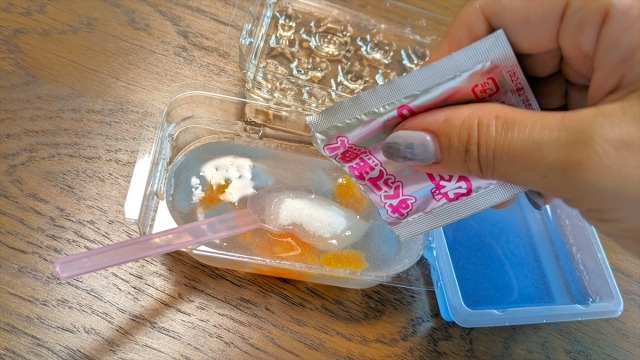
After waiting for three minutes, she then poured in the remaining poi-hardening solution.
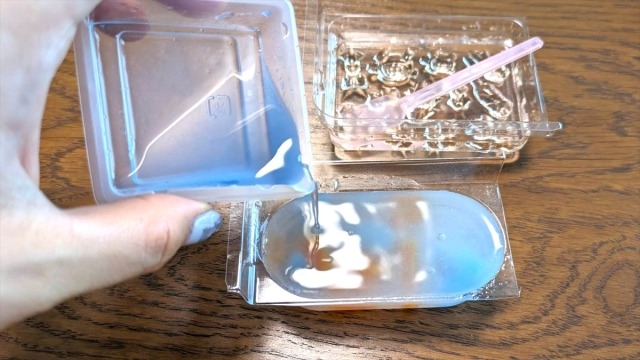
If everything is done correctly, the tray should be filled right to the brim with a jelly that tastes like lemon-lime soda.
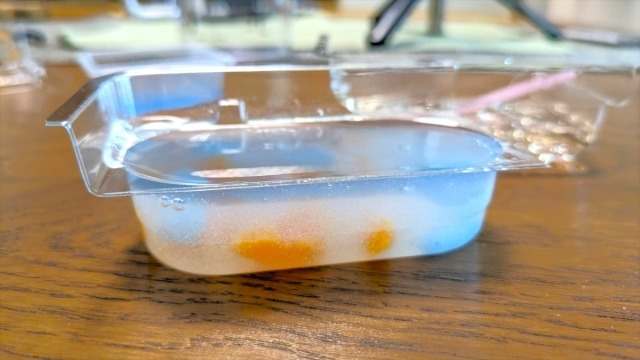
From start to finish, the whole thing took about 20 minutes, which is a really good value for a couple hundred yen. It was pretty action-packed too, watching powder change to fish and everything change from a game to a cup of jelly.
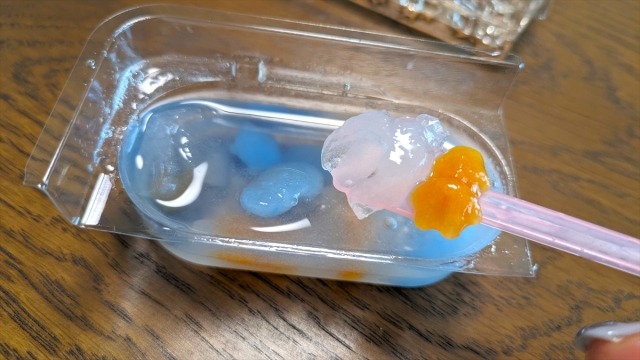
Haruka also checked the nutritional information and was surprised to learn that this was low in calories and high in calcium.
▼ That being said, it doesn’t really have much of anything other than sugar, calories, and calcium.
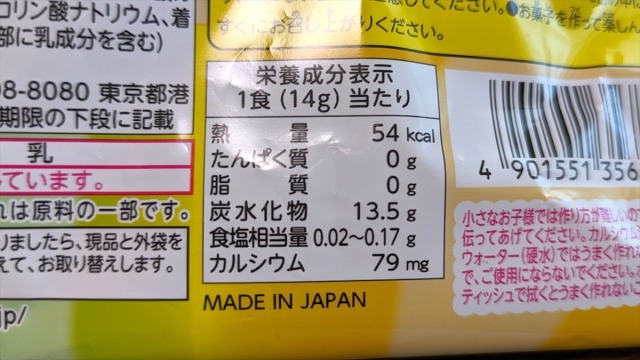
She felt it could be a little challenging for some kids, but Kracie knows this too and puts a star difficulty rating on each item so you can judge which ones are best for the child or child-like adult in your life.
▼ This one has a difficulty rating of three out of five.
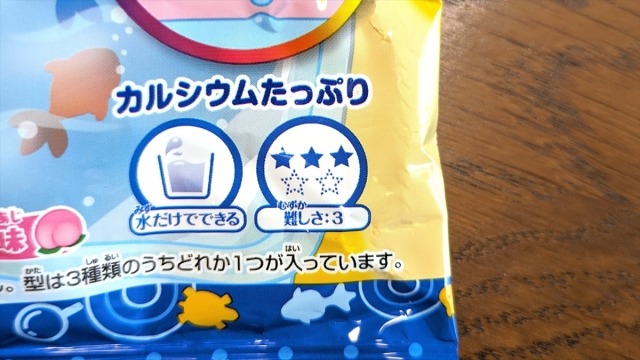
Scoop Goldfish! is a great choice though, because it has a nice touch of Japanese culture to it and is much, much better than playing the real game. The last time my daughter did it, she won two medaka who a few weeks later became the proud parents of about five dozen medaka that I am currently taking care of…
Photos ©SoraNews24
● Want to hear about SoraNews24’s latest articles as soon as they’re published? Follow us on Facebook and Twitter!
Credit:

0 comments: